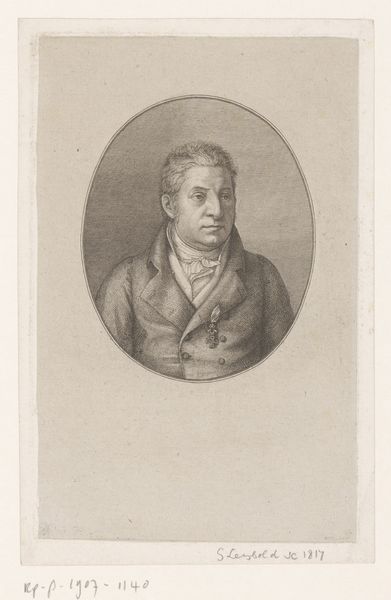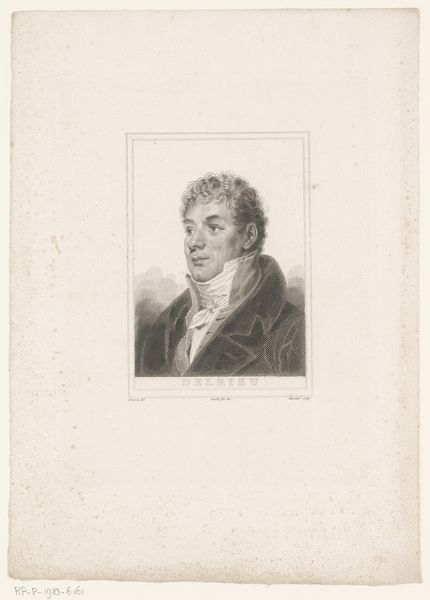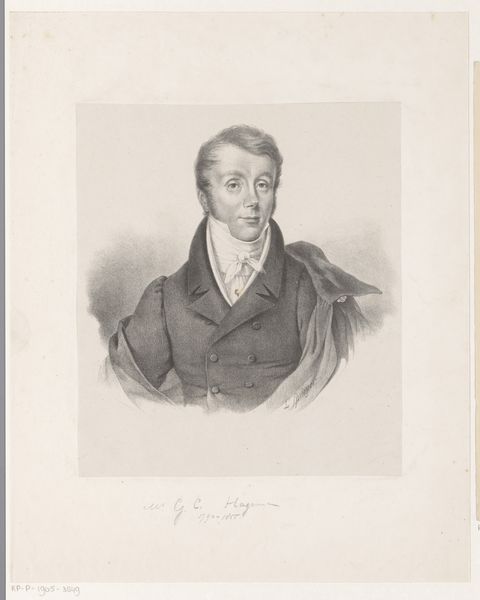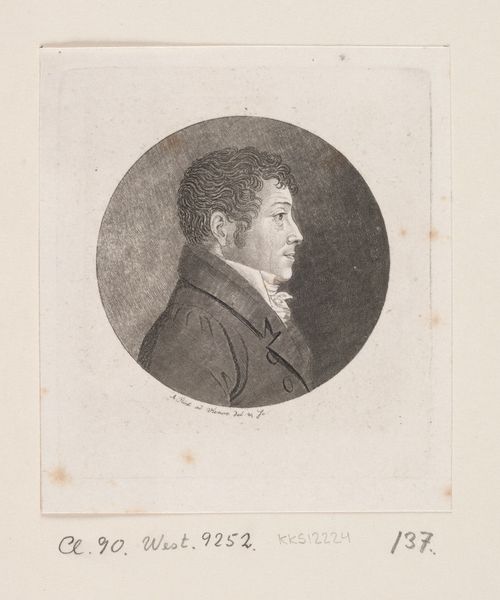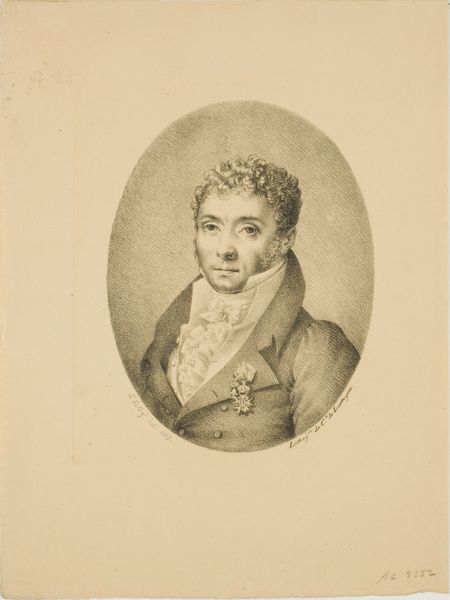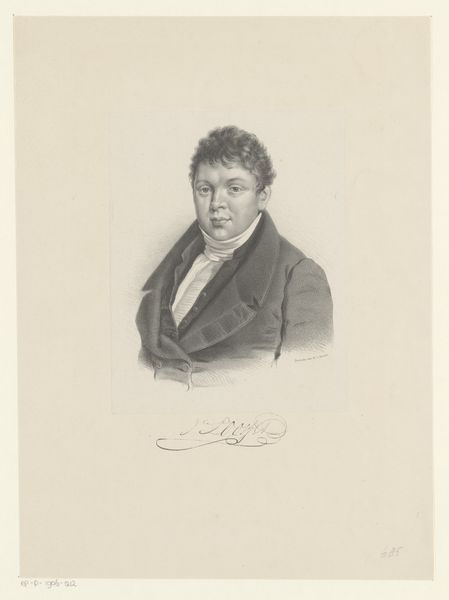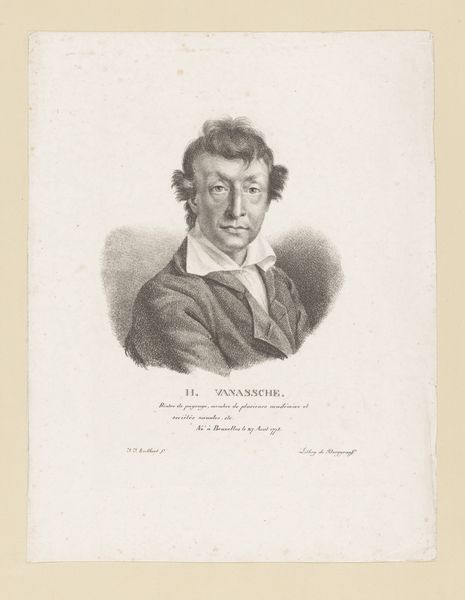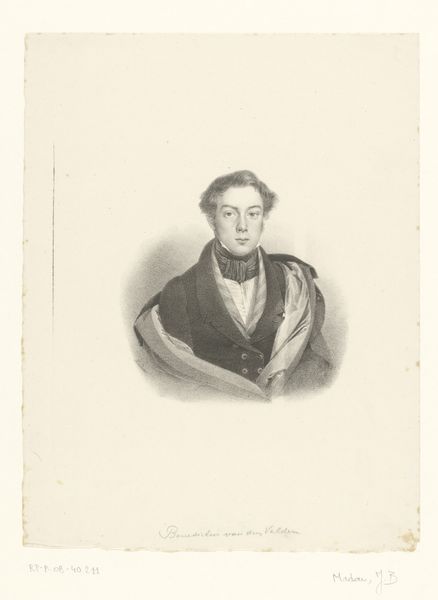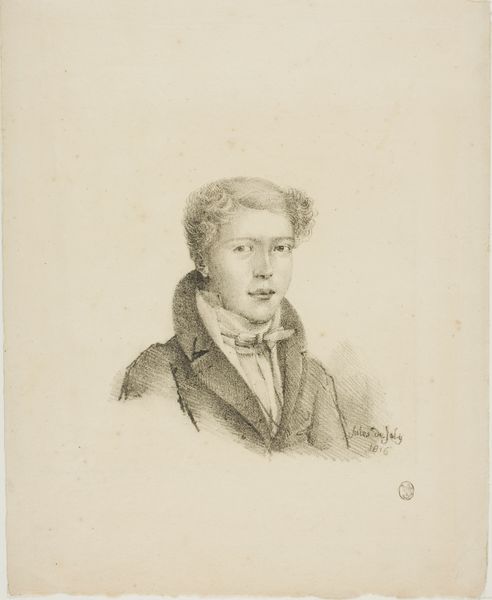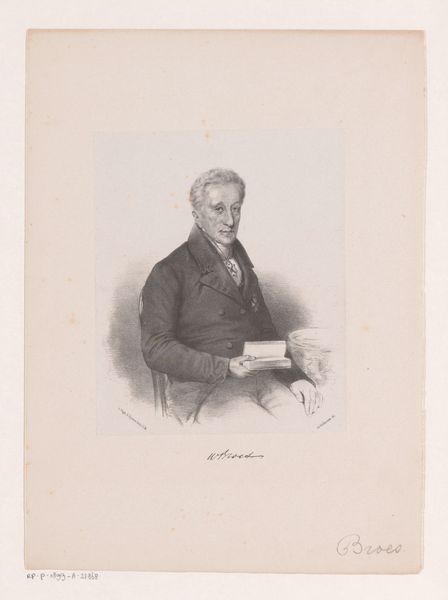
drawing, pencil
#
portrait
#
pencil drawn
#
drawing
#
neoclacissism
#
pencil sketch
#
old engraving style
#
personal sketchbook
#
pencil drawing
#
pencil
#
portrait drawing
#
realism
Dimensions: height 182 mm, width 140 mm
Copyright: Rijks Museum: Open Domain
Editor: Here we have Friedrich Rossmässler's "Portret van Heinrich Sigismund von Zeschau," a pencil drawing made sometime between 1785 and 1858. The gentleman's pose feels almost confrontational, arms crossed and gaze direct, but the medium gives it a soft, almost vulnerable quality. What do you see in this piece, particularly in how it might reflect the social dynamics of its time? Curator: I see a tension between the sitter's apparent confidence and the constraints placed upon him by social expectations. This portrait exists within a historical moment grappling with shifting class structures, where inherited privilege was increasingly challenged by emerging bourgeois values. Note the precise rendering, a nod to Neoclassical ideals of order and reason, yet there's a hint of Romantic individualism in his somewhat disheveled hair. How might his social standing as indicated in the portrait be read in relation to the emerging middle class and its values? Editor: I hadn’t considered the tension between Neoclassical order and Romantic individualism in his portrayal, but now I see it clearly in those subtle details. It's as if Rossmässler is commenting on the changing definitions of masculinity and social identity during this period. Curator: Exactly! And isn’t the seemingly straightforward depiction of this man charged with undercurrents about how individuals navigate a changing society. The pencil, typically associated with sketches and studies rather than formal portraiture, softens any possible read as overly stern or unapproachable and brings an intimacy. We may even want to think about it within modern Queer Studies to explore masculinity and expectations from the past that haunt us now. Editor: So, it is possible that the artist is challenging rigid social constructs by choosing a medium considered less formal or official for such portraiture. That’s not something I initially would have observed, but I will remember that going forward! Curator: Indeed, thinking about these dynamics opens up multiple layers of meaning and reveals how artworks can simultaneously reflect and challenge dominant ideologies. I learned something as well - it’s always rewarding to challenge and examine such powerful legacies of Western art.
Comments
No comments
Be the first to comment and join the conversation on the ultimate creative platform.
